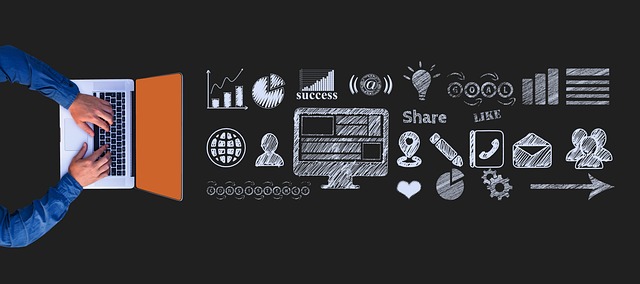AI staff scheduling for hibachi grill restaurants optimizes workforce management using machine learning. By analyzing historical data, these systems create balanced schedules for peak times, reduce labor costs, and enhance customer experiences. AI also forecasts demand, automates adjustments based on real-time sales, and guides efficient training programs. Implementing AI involves assessing current practices, choosing the right tool, preparing data, deploying, testing, and iterating to optimize performance. This digital revolution in hospitality improves customer experiences, especially in Asian restaurants featuring hibachi grills.
“Discover how AI is transforming the culinary scene, especially in Asian restaurants featuring hibachi grills. This article explores the revolutionary power of AI-driven staff scheduling, highlighting its benefits and applications in enhancing operational efficiency. We provide a comprehensive guide on implementing this technology step by step, from data collection to optimization. Additionally, we delve into future trends, focusing on how AI can elevate customer experiences through personalized and seamless service.”
- Understanding AI-Driven Staff Scheduling for Hibachi Grills: Benefits and Applications
- Implementing AI in Restaurant Operations: A Step-by-Step Guide
- Future Trends: Enhancing Customer Experience with AI Staff Scheduling
Understanding AI-Driven Staff Scheduling for Hibachi Grills: Benefits and Applications

AI-driven staff scheduling is transforming the way hibachi grill restaurants manage their workforce, offering numerous benefits tailored to the dynamic nature of this high-energy dining environment. By leveraging machine learning algorithms, these systems can analyze historical sales data, expected customer traffic, and staffing patterns to create optimized schedules that ensure adequate coverage during peak times while avoiding overstaffing during quieter periods. This not only reduces labor costs but also enhances staff satisfaction by providing more predictable and balanced work shifts.
The applications of AI in hibachi grill settings are vast. From forecasting demand to automate scheduling adjustments based on real-time sales updates, these intelligent systems can adapt quickly to unexpected changes, such as sudden surges in customer influx or staff call-ins. Moreover, they facilitate efficient training by identifying patterns that highlight peak learning periods and suggesting targeted training sessions for new hires. Ultimately, AI staff scheduling promises to elevate the overall dining experience, ensuring that customers receive consistent high-quality service regardless of the time of day.
Implementing AI in Restaurant Operations: A Step-by-Step Guide

Implementing AI in Restaurant Operations: A Step-by-Step Guide
1. Assess Current Processes: Begin by understanding your current staff scheduling practices for hibachi grills. Identify pain points, such as manual planning, overstaffing or understaffing, and high administrative burdens. These areas will guide your AI implementation strategy.
2. Choose the Right AI Tool: Select an AI-driven scheduling software tailored to the unique needs of your hibachi grill operation. Look for features like automated scheduling algorithms, real-time labor forecasting, and integration with existing point-of-sale systems. Ensure the chosen tool can handle peak hours and special events effectively.
3. Collect and Prepare Data: Gather historical staffing data, sales records, and shift patterns. Clean and organize this data to feed into your AI model accurately. The quality of input data directly impacts the performance of your AI scheduling system.
4. Train and Deploy AI Model: Train your AI model using the prepared data. This involves fine-tuning algorithms to recognize patterns in your restaurant’s operations. Once trained, deploy the model for real-time scheduling, ensuring it can adapt to changes and make accurate predictions.
5. Test and Iterate: Implement a pilot program to test the AI scheduler’s performance under various conditions. Collect feedback from staff and managers, making adjustments as needed to optimize the system’s efficiency and user experience. Continuous iteration ensures your AI solution remains effective over time.
Future Trends: Enhancing Customer Experience with AI Staff Scheduling

As the world embraces technological advancements, the hospitality industry is experiencing a significant transformation, particularly in customer experience. AI-driven staff scheduling is emerging as a game-changer, especially for Asian restaurants featuring hibachi grills. By leveraging artificial intelligence, these restaurants can optimize their operations and elevate the overall dining experience.
AI staff scheduling systems offer numerous benefits, from efficient workforce management to enhanced customer satisfaction. These technologies can analyze historical data, predict peak hours, and automatically generate schedules, ensuring adequate staffing during busy periods. For hibachi grills, where customer interactions are more personal and dynamic, AI can anticipate demand and assign staff accordingly, providing prompt service without compromising quality. This not only reduces operational costs but also allows staff to focus on delivering exceptional culinary experiences and fostering a vibrant dining atmosphere.
AI-driven staff scheduling is transforming the way Asian restaurants, particularly those featuring hibachi grills, manage their operations. By leveraging advanced algorithms and data analysis, this technology optimizes workforce allocation, enhances customer satisfaction, and ensures efficient restaurant management. As we look to the future, AI staff scheduling promises to play an even more significant role in enhancing the overall dining experience, making Asian cuisine accessible and enjoyable for all.
